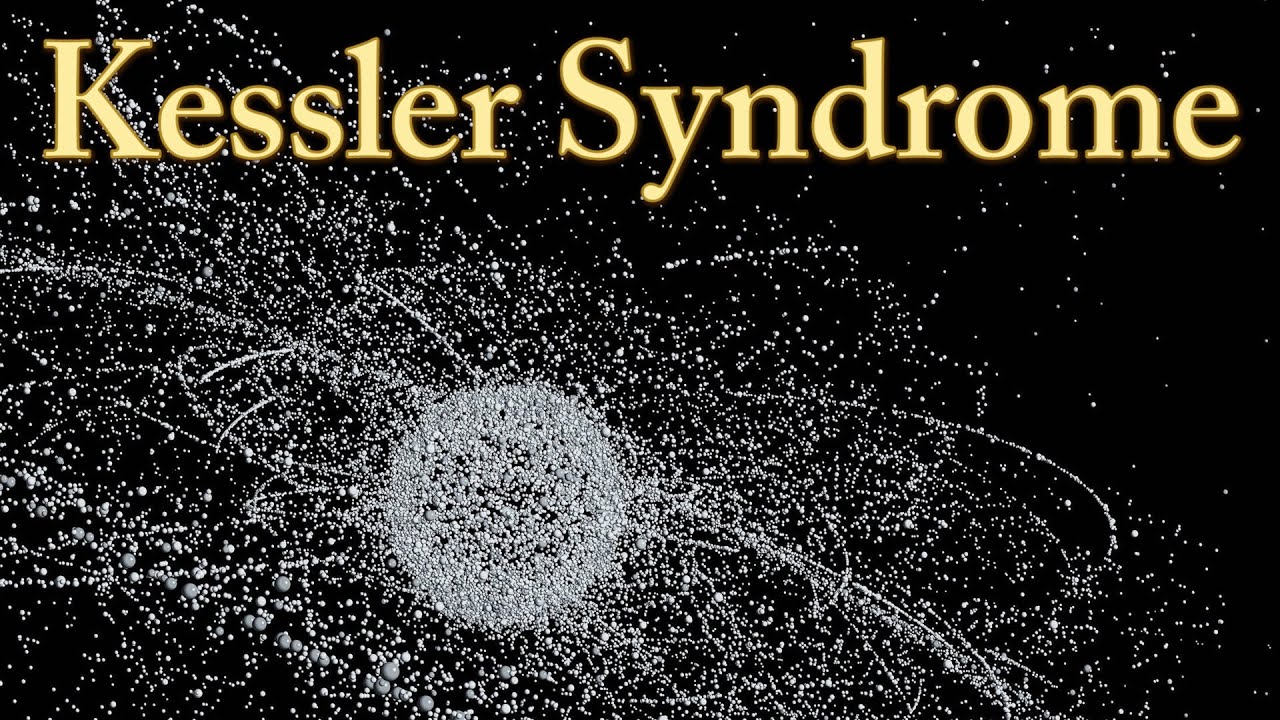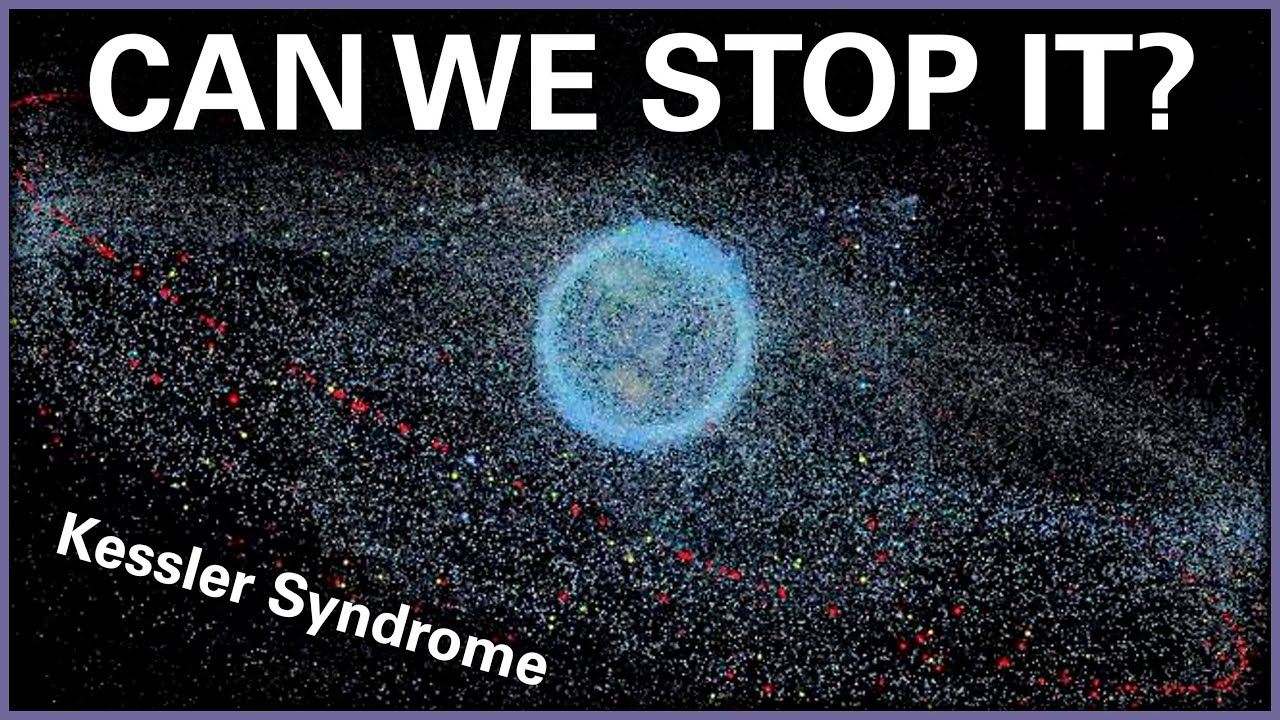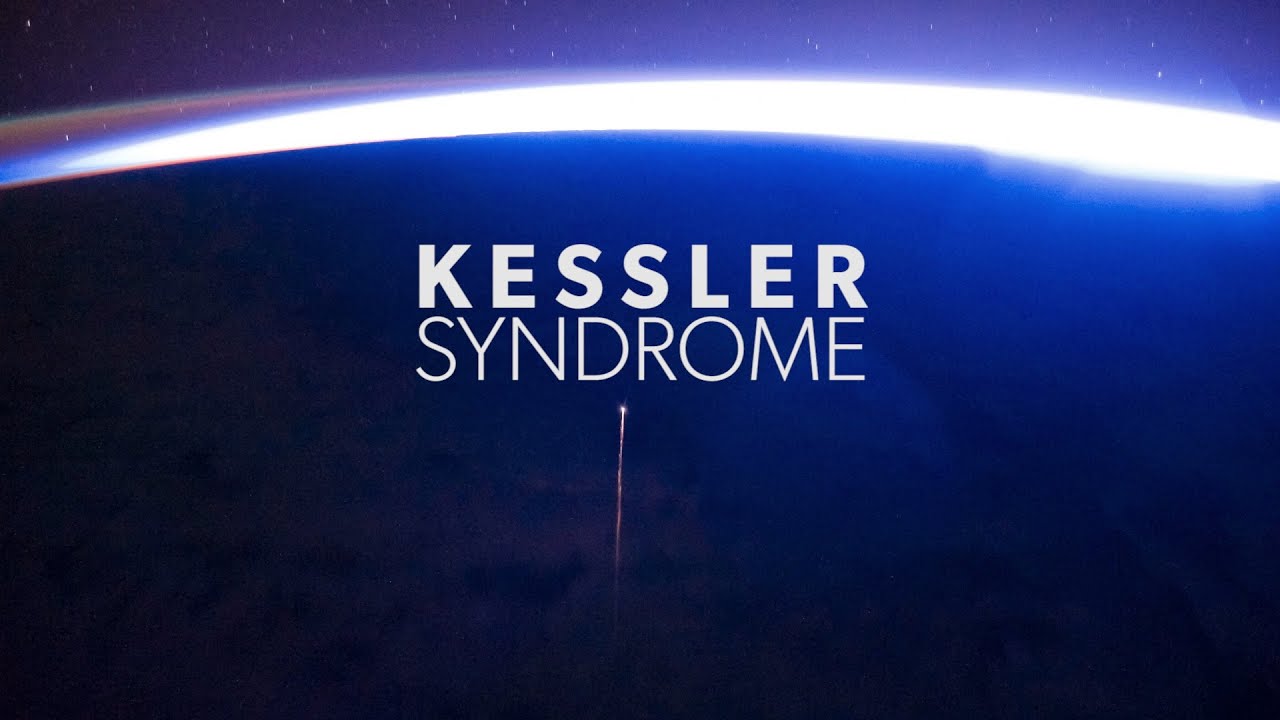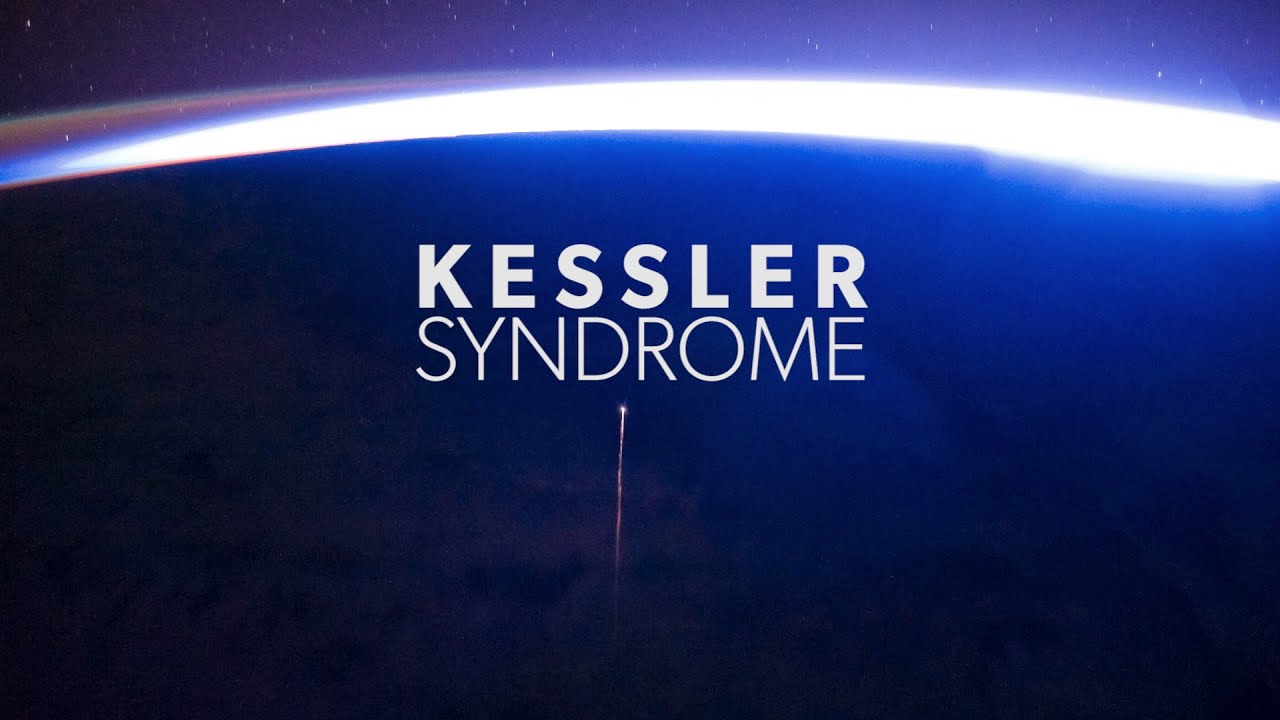What is ‘Kessler Syndrome’ — and why do some scientists think the future of space exploration is threatened? It’s a scenario where collisions of space debris create a cascading effect, exponentially increasing the amount of junk in orbit and making space travel incredibly dangerous, even impossible. This isn’t just science fiction; it’s a very real concern based on the growing amount of defunct satellites, rocket stages, and other debris circling our planet.
Imagine a cosmic demolition derby, but instead of cars, it’s satellites and rocket parts smashing into each other at incredibly high speeds. Each collision creates even more debris, leading to a chain reaction that could render low Earth orbit unusable. This is the essence of Kessler Syndrome, a concept that has spurred considerable debate and research within the scientific community.
Kessler Syndrome: A Cascade of Catastrophe: What Is ‘Kessler Syndrome’ — And Why Do Some Scientists Think The

Imagine a future where the vast expanse of space, once a symbol of limitless exploration, becomes a perilous graveyard of defunct satellites and debris. This isn’t science fiction; it’s the chilling prospect of Kessler Syndrome, a chain reaction of collisions that could render near-Earth orbit unusable for generations. This article explores the science, the risks, and the potential solutions to this looming threat.
Definition of Kessler Syndrome
Kessler Syndrome, simply put, is a runaway chain reaction of collisions in low Earth orbit (LEO). It’s a scenario where the density of space debris becomes so high that a single collision triggers a cascade of further collisions, creating an exponentially increasing amount of debris, ultimately making LEO unusable for satellites and spacecraft. This concept was first proposed in 1978 by NASA scientist Donald J.
Okay, so Kessler Syndrome is basically a chain reaction of space junk collisions. Scientists worry that it could render low Earth orbit unusable, a bit like a really messy game of cosmic curling, check out this article about Winnipeg’s arena curling in a club project seen as start of cross: Winnipeg’s arena curling in a club project seen as start of cross – it’s a surprisingly relevant analogy for the uncontrolled cascading effect of Kessler Syndrome.
The potential consequences for space exploration are pretty serious.
Kessler and Burton G. Cour-Palais, based on their analysis of the growing amount of space debris in LEO.
The core components of this cascade effect involve the initial collision, the fragmentation of colliding objects into numerous smaller pieces, and the subsequent collisions of these fragments with other objects, leading to a self-perpetuating cycle of destruction. The sheer number of fragments generated and their high velocities ensure that the cascade quickly escalates, rendering a significant portion of LEO uninhabitable for operational spacecraft.
The Mechanics of Orbital Debris

Space debris encompasses a wide range of objects, from defunct satellites and spent rocket stages to fragments from collisions and explosions. These objects originate from various sources, including mission-related activities (e.g., discarded rocket parts, satellite malfunctions), anti-satellite weapons testing, and natural events (e.g., micrometeoroid impacts).
Collisions in orbit are particularly dangerous due to the incredibly high velocities involved. Objects in LEO typically travel at speeds exceeding 7 kilometers per second (around 15,700 mph). Even a small piece of debris at this speed can cause significant damage to a functioning satellite or spacecraft. The physics behind these collisions are straightforward: the kinetic energy of the colliding objects is transferred into fragmentation, creating even more debris that continues the cycle.
The velocity of orbital debris varies depending on altitude and orbital inclination; however, even smaller pieces pose a substantial threat due to their high velocity.
Probability and Modeling of Kessler Syndrome, What is ‘Kessler Syndrome’ — and why do some scientists think the
Predicting the likelihood of a Kessler Syndrome event involves complex mathematical models that simulate the evolution of the space debris environment. These models consider factors such as the number and size distribution of debris, their orbital parameters, and the probability of collisions. Key variables include the current density of debris, the rate of new debris generation, and the effectiveness of mitigation strategies.
Okay, so Kessler Syndrome is this scary idea where space junk collides, creating a chain reaction that makes space travel impossible. It’s a bit like how one bad decision can snowball into a bigger problem, much like how The Nitish Kumar Reddy story: As allrounder shines at MCG, here’s shows how one person’s talent can create a wave of positive impact.
Scientists worry about Kessler Syndrome because it could essentially lock us out of space, a pretty significant consequence.
However, current modeling techniques have limitations. Accurately tracking all pieces of debris is challenging, especially smaller fragments. Models also rely on assumptions about the material properties of debris and the nature of collisions, which can introduce uncertainties in the predictions. Despite these limitations, models consistently highlight the increasing risk of a Kessler Syndrome event if the current trajectory of debris accumulation continues.
Scientific Concerns and Debate
Scientists are deeply concerned about the long-term sustainability of space activities in the face of growing space debris. The potential consequences of a full-blown Kessler Syndrome event are severe, including the loss of critical infrastructure such as communication satellites, navigation systems, and Earth observation platforms. This would have profound economic and social implications, disrupting various sectors reliant on space-based technologies.
While there’s a broad consensus on the potential threat, perspectives differ on the urgency of addressing the problem. Some advocate for immediate and aggressive mitigation strategies, emphasizing the potential for irreversible damage. Others prioritize further research and development of debris removal technologies, arguing for a more measured approach.
Mitigation Strategies and Prevention
Several strategies are proposed to mitigate the space debris problem and prevent a Kessler Syndrome event. These range from designing satellites for easier de-orbiting to active debris removal missions. The effectiveness and challenges associated with each strategy vary significantly.
| Strategy | Description | Effectiveness | Challenges |
|---|---|---|---|
| Improved Design for De-orbiting | Designing satellites with systems to ensure controlled re-entry and burn-up in the atmosphere after their operational life. | High, if universally adopted. | Requires international cooperation and standardization; technological challenges for some satellite designs. |
| Active Debris Removal | Developing and deploying technologies to capture and remove large pieces of debris from orbit. | Potentially high, but dependent on technological advancements and cost. | High technological complexity, significant cost, and logistical challenges. |
| Collision Avoidance Maneuvers | Using tracking data to predict and avoid potential collisions between operational satellites and debris. | Moderate, effective for individual satellites but doesn’t address the overall debris population. | Requires continuous monitoring and precise maneuvering capabilities; may not be feasible for all satellites. |
| International Cooperation and Regulations | Establishing international agreements and guidelines to reduce the creation of new debris. | Essential for long-term success, but relies on global commitment. | Requires international consensus and enforcement mechanisms. |
Current international efforts include the Inter-Agency Space Debris Coordination Committee (IADC), which promotes cooperation among space agencies to address the space debris problem. Other initiatives focus on developing guidelines for responsible space operations and promoting best practices for mission design and disposal.
For example, a successful implementation of improved design for de-orbiting, coupled with stringent international regulations, could significantly slow the growth of debris in LEO. This would reduce the probability of a catastrophic Kessler Syndrome event and allow for continued safe and sustainable space activities.
Okay, so Kessler Syndrome is basically a space junk apocalypse where collisions create more debris, leading to a cascading effect. To understand the complexities of orbital debris management and mitigation, check out ALW In Focus: Tijan McKenna for insights into innovative solutions. This is crucial because some scientists believe the uncontrolled growth of space junk could eventually render low Earth orbit unusable.
The Role of Technology in Addressing Kessler Syndrome
Technological advancements are crucial for tracking and removing space debris. Advanced sensor networks, improved tracking algorithms, and robotic technologies are being developed to enhance our ability to monitor the debris environment and perform debris removal operations. However, developing and implementing these technologies face significant challenges, including the vastness of space, the high cost of space missions, and the technological complexity of capturing and manipulating debris in orbit.
Several advanced technologies are under development. These include robotic arms and nets for capturing debris, laser ablation systems for vaporizing small debris pieces, and innovative propulsion systems for efficient and precise maneuvers in space. Each technology presents unique potential and limitations concerning its effectiveness, cost, and scalability. For instance, laser ablation is promising for smaller debris but might be less effective for larger objects.
Robotic arms offer precise manipulation but are more complex and costly to deploy.
Long-Term Implications and Future Outlook

The potential impact of Kessler Syndrome on future space exploration is profound. A severely cluttered LEO could severely restrict access to space, hindering scientific research, commercial activities, and national security applications. Projections for the growth of space debris in the coming decades vary depending on the effectiveness of mitigation efforts. However, without significant intervention, the density of debris is expected to continue increasing, escalating the risk of a Kessler Syndrome event.
The economic and political consequences of a catastrophic event could be far-reaching. The disruption of satellite-based services would affect global communication, navigation, weather forecasting, and numerous other critical sectors. This could trigger international tensions and conflicts over access to and control of space resources. The potential for a cascading failure of essential space infrastructure highlights the need for proactive and collaborative efforts to mitigate this significant threat.
Final Wrap-Up
The threat of Kessler Syndrome isn’t just a hypothetical worry; it’s a potential catastrophe with far-reaching consequences. While the exact timeline remains uncertain, the escalating amount of space debris necessitates proactive measures. International collaboration, technological innovation, and responsible space practices are crucial to mitigating this risk and ensuring the long-term sustainability of space exploration. The future of humanity’s reach beyond Earth depends on it.
FAQ Section
What causes space debris?
Space debris comes from various sources, including defunct satellites, spent rocket stages, fragments from collisions, and even paint flakes from spacecraft.
How fast does space debris travel?
Space debris travels at incredibly high speeds, often exceeding 17,500 mph (28,000 km/h). Even a small piece of debris can cause significant damage due to its velocity.
Are there any successful debris removal missions?
While there haven’t been many large-scale successful debris removal missions yet, several experimental missions are underway, testing various technologies for capturing and removing debris from orbit.
What are the economic consequences of a Kessler Syndrome event?
A Kessler Syndrome event would have massive economic consequences, impacting satellite communication, navigation systems, Earth observation, and potentially even space tourism, resulting in billions of dollars in losses.
